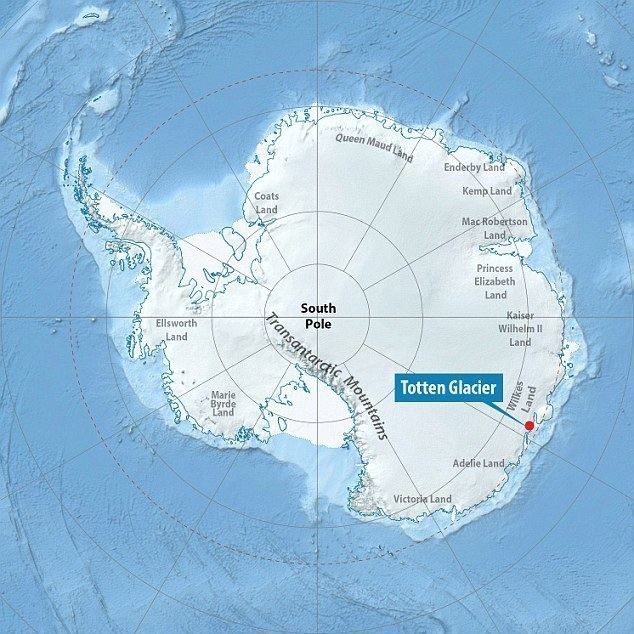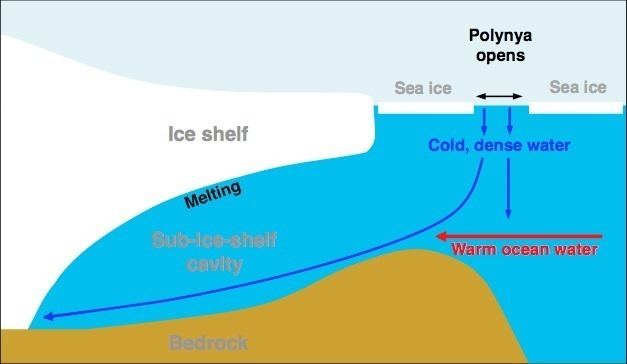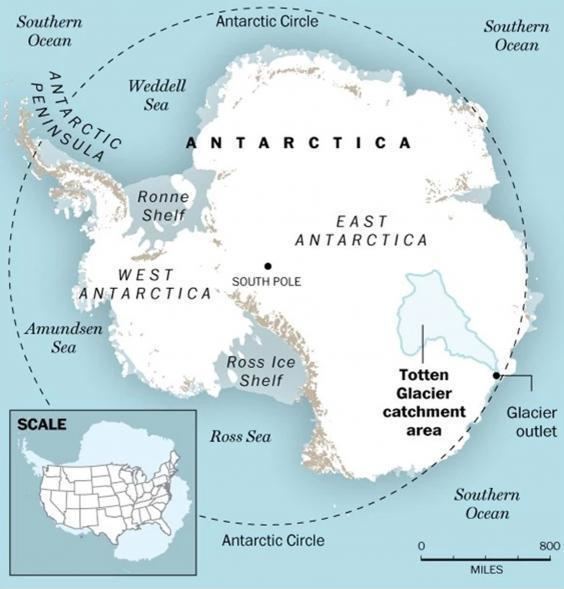 | ||
Totten Glacier is a large glacier draining a major portion of the East Antarctic Ice Sheet, through the Budd Coast of Wilkes Land in the Australian Antarctic Territory. The catchment drained by the glacier is estimated at 538,000 km2, extending approximately 1100 km into the interior and 750 km across. Totten drains northeastward from the continental ice but turns northwestward at the coast where it terminates in a prominent tongue close east of Cape Waldron. It was first delineated from aerial photographs taken by USN Operation Highjump (1946–47), and named by Advisory Committee on Antarctic Names (US-ACAN) for George M. Totten, midshipman on the USS Vincennes of the United States Exploring Expedition (1838–42), who assisted Lt. Charles Wilkes with correction of the survey data obtained by the expedition.
Contents
Totten Glacier Tongue (66°35′S 116°5′E) is a prominent glacier tongue extending seaward from Totten Glacier. Delineated from air photos taken by U.S. Navy Operation Highjump (1946–47) and named by US-ACAN in association with Totten Glacier. Airborne geophysical surveys of the Glacier between 2008 and 2012 showed that deep warm water can access, melt and thin the underside of the ice tongue, potentially accelerating the glacier.

Google timelapse totten glacier antarctica
Melt

Scientists studying the effects of global warming proposed in 2007 that sea water encroachment in the area could destabilize a significant portion of the East Antarctic Ice Sheet. A study in 2008 concluded that Totten Glacier is currently losing mass. A study published in 2015 concluded that Totten Glacier has the largest contribution of ice thinning rate on the East Antarctic continent, and that the thinning is driven by enhanced basal melting, because of ocean processes, and affected by polynya activity. Additionally, warm Circumpolar Deep Water has been observed during summer and winter months at the nearby continental shelf below 400 to 500 meters of cool Antarctic Surface Water. The deep water was observed entering beneath the glacier at the rate of 220,000 m3/s. The Totten Glacier is estimated to have a catchment area capable of generating a sea level rise of 3.5 meters in the event of a complete melt.


